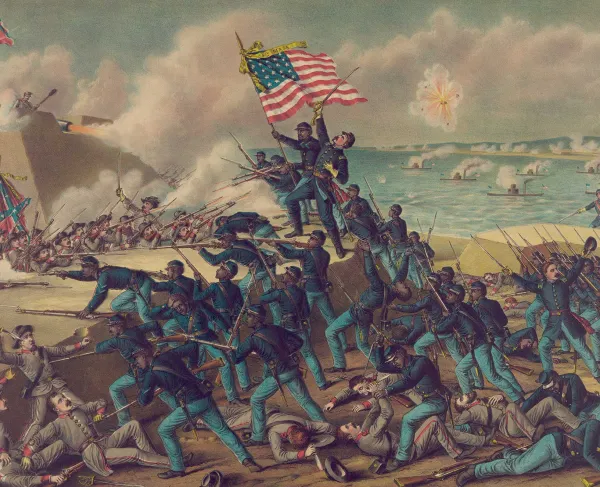Tour the Atlanta Campaign in Three Days
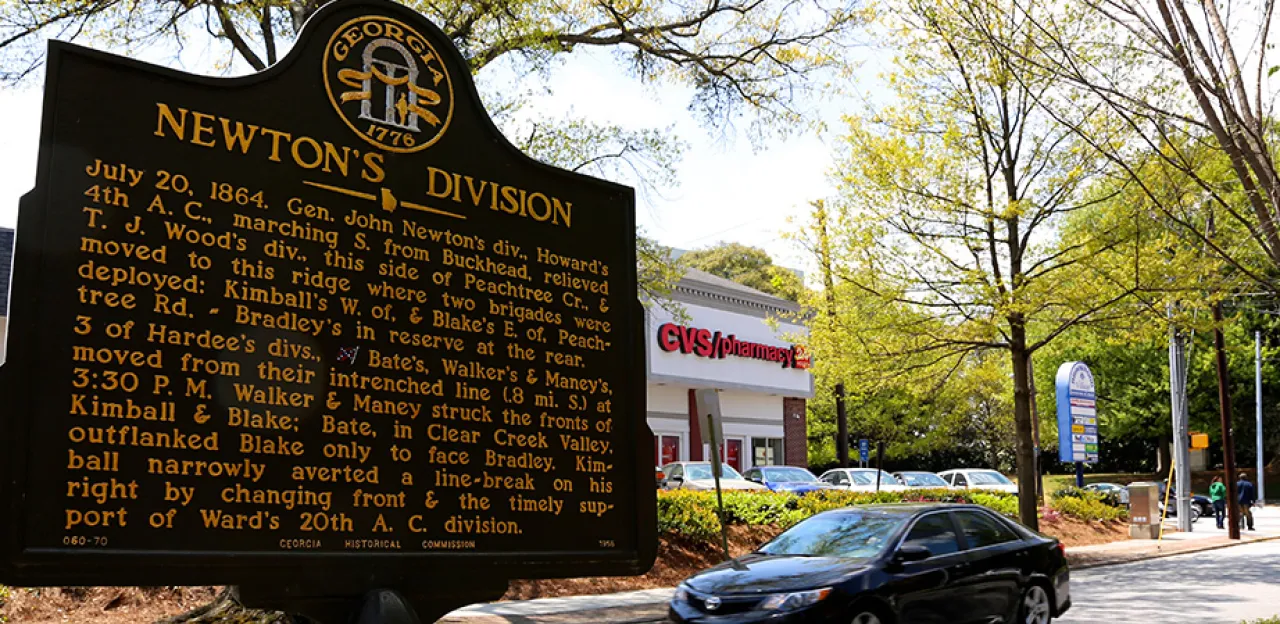
In three days you can visit all of the important sites of the 1864 campaign to take Atlanta, Georgia. You can spend as much or as little time as you like at the various sites. However, you should be sure to allow plenty of time to visit the Atlanta History Center’s excellent Civil War exhibit, Turning Point, as well as the area’s best-preserved battlefields: Resaca, Pickett’s Mill, and Kennesaw Mountain. If you visit all 15 stops, you’ll cover the campaign’s most important sites from northwest Georgia to the heart of Atlanta itself.
Before you go:
- Print or download the tour map.
- Watch the Atlanta Campaign in4 Video.
- Download the Atlanta Campaign Battle App for more detailed tour information, wayfinding assistance, and additional tour stops.
- Learn about the battles of the Atlanta Campaign.
- Read about Atlanta’s lost Civil War battlefields.
- Watch the Entire Civil War Animated Map to understand the Atlanta Campaign’s significance in the context of the entire conflict.
- Learn about the Atlanta Campaign Pavilion Parks to help navigate the battlefields.
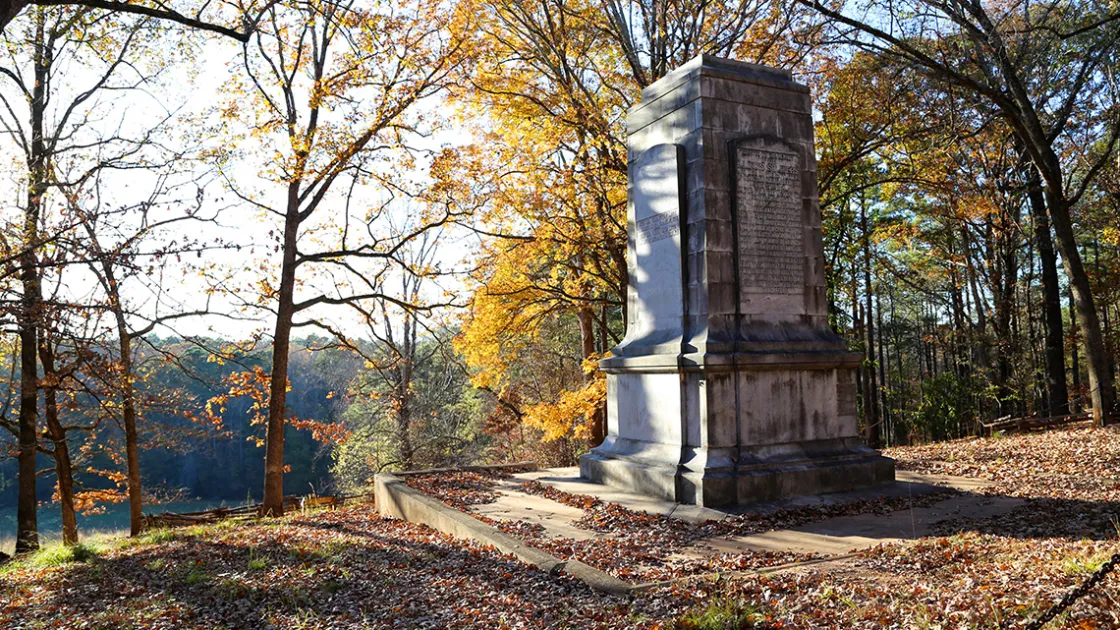
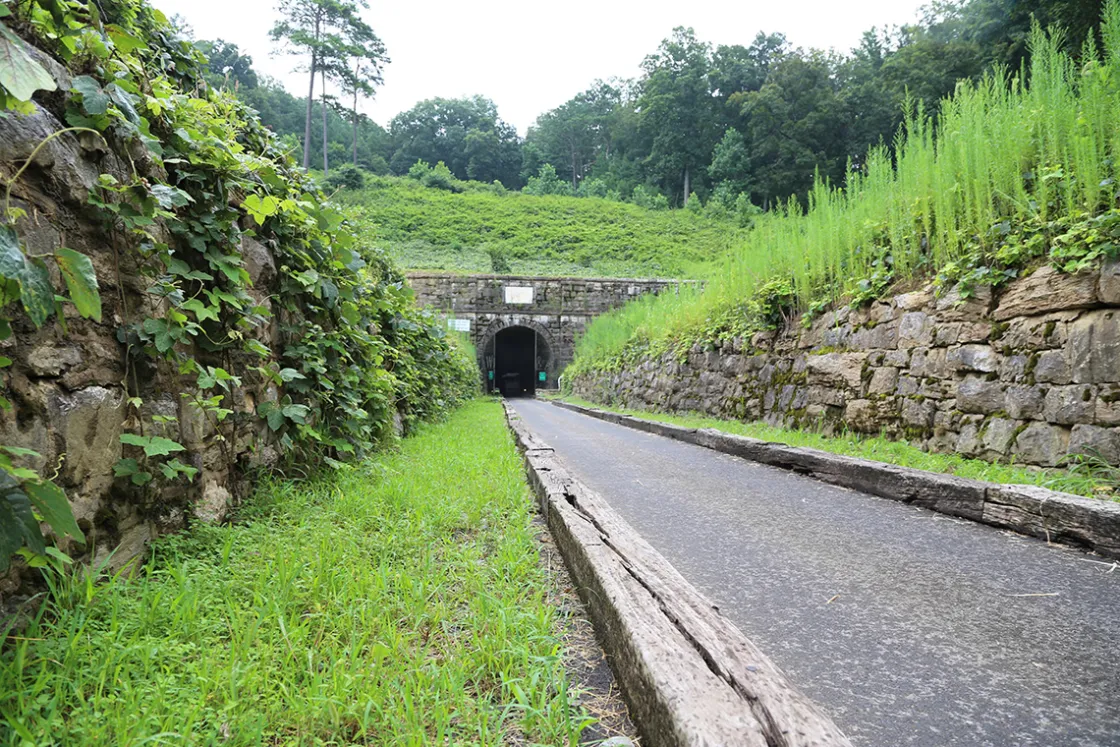
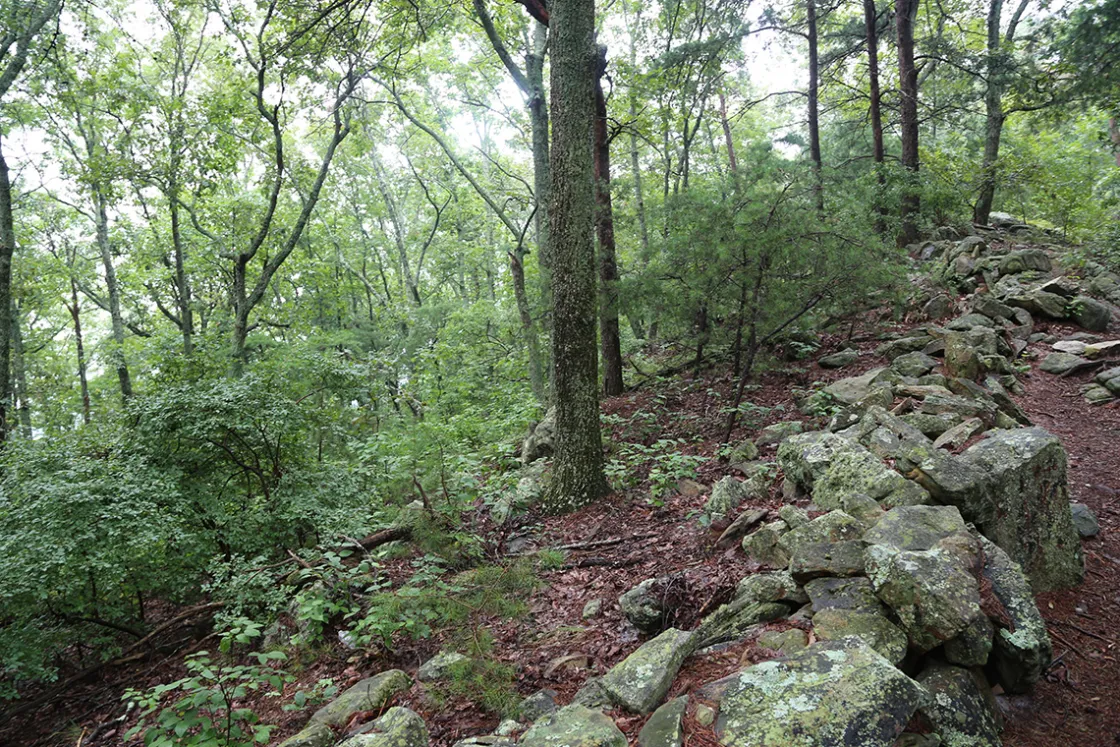
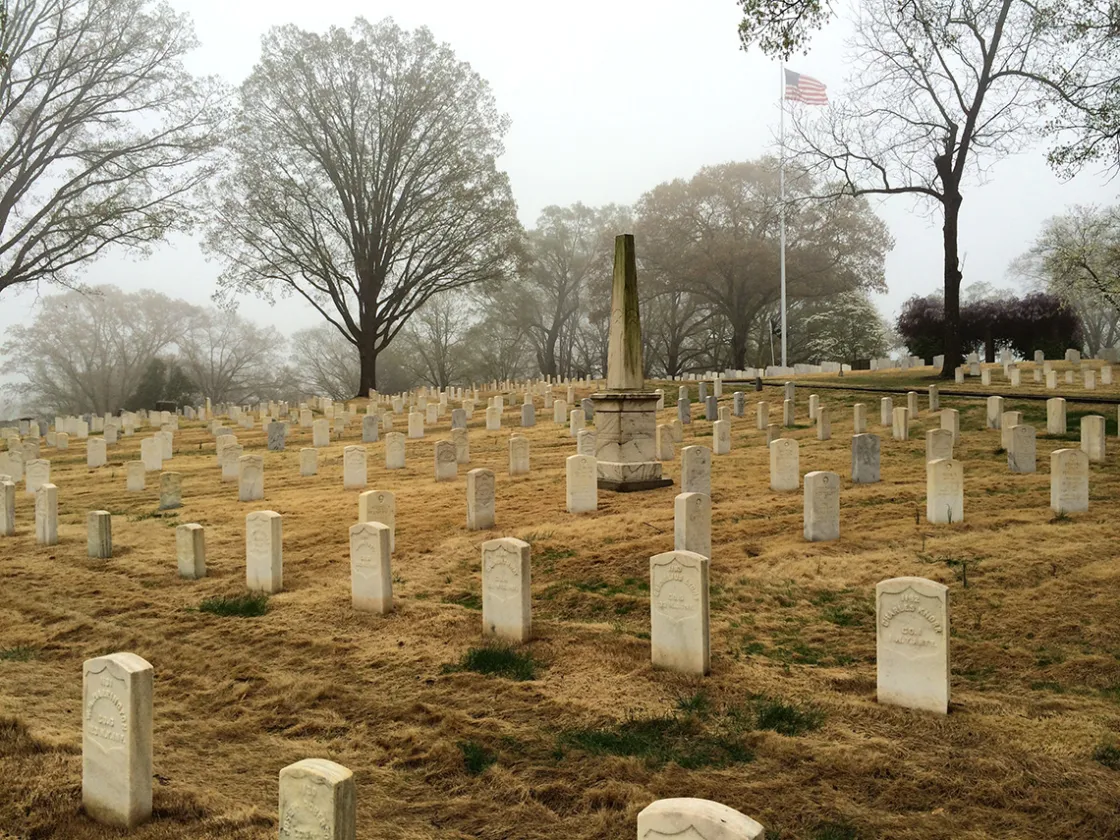
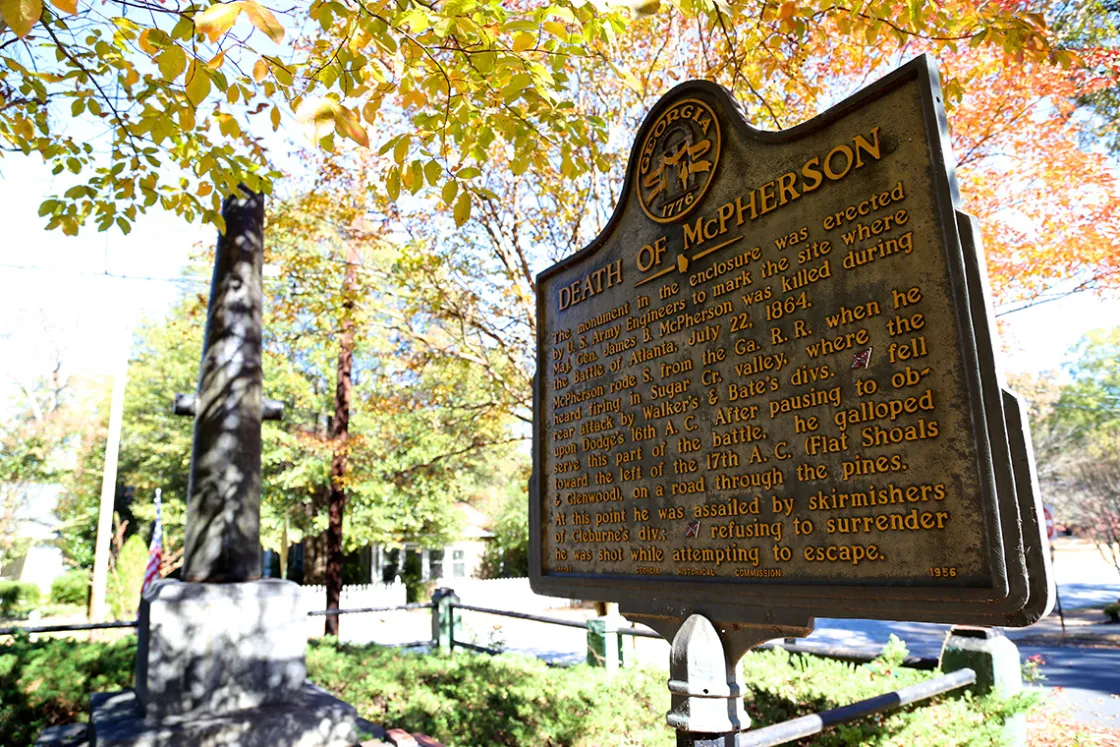
Stop #1: Tunnel Hill
Time: 1-2 hours
Details: http://www.civilwarrailroadtunnel.com
This 1,477-foot tunnel through the Chetoogeta Mountain was featured in the Great Locomotive Chase of 1862 and was the site of Union General William T. Sherman’s headquarters at the start of the Atlanta Campaign in May of 1864.
What to do:
Start your tour at the Tunnel Hill Heritage Center & Museum, 215 Clisby Austin Drive, Tunnel Hill, GA
- Take a guided tour of the Tunnel.
- Visit the Clisby-Austin House.
- Explore the Tunnel Hill Heritage Museum.
Stop #2: Dalton
Time: 3-4 hours
Surrounded by high, rocky mountains, the town of Dalton served as the Confederate Army’s winter quarters from December 1863 to May 1864. Various portions of the Confederate earthworks—some of which saw heavy action in the opening stages of the Atlanta Campaign—have been preserved and are open to the public.
What to do:
Start your tour at the Pavilion Park at Mill Creek Gap on US-41 (2415 Chattanooga Road, Dalton, GA)
- Mill Creek Gap – The center of the Confederate line is located along US-41 just outside Dalton. Confederate earthworks can be found near the Pavilion Park in front of the police station.
- Potato Hill – The Confederate right flank was anchored here during the Winter of 1863-1864 and saw action in February and May of 1864. Climb to the top of the hill to see some excellent earthworks and a spectacular view of the Confederate right flight during the battles for Dalton.
- Dug Gap – Union troops climbed the sheer cliffs at Dug Gap in an attempt to turn the Confederate left flank. Two Medals of Honor were awarded for actions here.
- Visit the Dalton Confederate Cemetery.
If you have time:
- Visit Gen. Joseph E. Johnston’s headquarters in Dalton and learn about Patrick Cleburne’s proposal to arm slaves to fight for the Confederacy.
- See the monument to Johnston in downtown Dalton, one of only two monuments to one of the Confederacy’s highest-ranking officers.
Insider tip: The Civil War Trust’s Atlanta Campaign Battle App provides great detail and driving directions for these and other Dalton-area sites.
Stop #3: Resaca
Time: 2 hours
Details: http://www.gordoncountyparks.org
Though heavily damaged by I-75 (which runs through the heart of the battlefield) Resaca is, in many respects, a preservation success. Key portions of the battlefield have been preserved by both the Trust, the Georgia Battlefields Association, and other local partners. The Resaca Battlefield State Historic Site now owns and interprets much of the land.
What to do:
Start at the Resaca Battlefield State Historic Site (6 GA-136, Resaca, GA)
- Explore the Resaca Battlefield State Historic Site.
- Visit the Pavilion Park to learn about the fighting.
- Explore the Confederate Left flank on Chitwood Road—land preserved by the Civil War Trust.
Don’t miss:
- The Resaca Confederate Cemetery – a quiet, secluded place of reflection.
Insider tip: Please respect private property and exercise caution when visiting sites outside the state park.
Stop #4: New Hope Church and Pickett’s Mill
Time: 2-3 hours (3-4 if you like hiking)
Details: http://gastateparks.org/PickettsMillBattlefield
As Sherman chased Johnston’s army further into Georgia, the two forces became embroiled in fierce fighting in this thickly wooded region of Paulding County. Though historical markers dot the landscape, the best sites are the reconstructed New Hope Church, the New Hope Cemetery, and the Pickett’s Mill Battlefield State Historic Site.
What to do:
Before you go:
- Read “The Crime at Pickett’s Mill” by Ambrose Bierce for an eyewitness’s take on the events here.
Start your visit at the Pavilion Park at New Hope Church (31 Bobo Road, Dallas, GA)
- Visit the reconstructed New Hope Church and nearby Confederate earthworks.
- Walk the four miles of hiking trails at the Pickett’s Mill Battlefield.
Don’t miss:
- The Ravine and Pioneer Log Cabin at Pickett’s Mill.
If you have time:
- Stroll through the New Hope Cemetery to find the graves of Confederate soldiers, including Lieutenant Benjamin W. Pickett, who owned nearby Pickett’s Mill prior to being killed at the Battle of Chickamauga.
- Visit the overlooked battlefields at nearby Gilgal Church and Pine Mountain. (Use the Atlanta Campaign Battle App to find your way to those two sites.)
Note: The roads between Stop #4 and Stop #5 can be especially confusing. At one intersection, three roads named Due West Road intersect with Kennesaw Due West Road. To make matters more confusing, one of those Due West Roads actually runs north-to-south. Please plan your route ibn advance of your visit to avoid confusion and use caution while driving.
Stop #5: Kennesaw Mountain National Battlefield
Time: 3-4 hours (more if you enjoy hiking)
Details: www.nps.gov/kemo
Located just off I-75 and less than 25 miles away from downtown Atlanta, Kennesaw Mountain National Battlefield is the only Atlanta Campaign site owned by the National Park Service. It features miles of earthworks, hiking trails, and unmatched views of the surrounding area.
What to do:
Start your visit at the National Park's Visitor Center (900 Kennesaw Mountain Drive, Kennesaw, GA)
- Visit the top of Kennesaw Mountain for a spectacular view of Atlanta and the surrounding area.
- Stand at Cheatham Hill, the scene of intense fighting during the battle.
- Walk the battlefield on the park’s 22 miles of trails.
- Visit the park museum and visitor center to see a collection of artifacts related to the campaign.
- Watch the park’s 35-minute film, Kennesaw: One Last Mountain.
Don’t miss:
- Kolb’s Farm: scene of fighting on June 22, 1864, the Kolb Farm house is only remaining Civil War structure located within the park.
- The Illinois Monument on Cheatham Hill.
- The grave of an unknown Union soldier on Cheatham Hill—walk along the earthworks past the Illinois Monument.
If you have time:
- Walk the trail connecting Big and Little Kennesaw Mountains to see some incredible Confederate artillery pits.
- Follow the path of the Union assault on Cheatham Hill by parking in the lot on Cheatham Hill Road (not to be confused with Cheatham Hill Drive). Cross the road and follow the trail through the woods to walk in the footsteps of the Union soldiers who fought here. (You’ll also pass a marker noting the departure point of the Union attackers.)
Insider tip: Traffic in this area can be bad, especially on weekdays during rush hour; please plan accordingly.
Stop #6 – Marietta’s Civil War Cemeteries
Time: 1-2 hours
Numerous casualties from the Atlanta campaign were later buried in Marietta National Cemetery or the Marietta Confederate Cemetery, which are located approximately one mile from one another (a 5-10 minute drive) in Marietta, Georgia.
Don’t miss:
- The monument to General John Geary’s Second Division, Twentieth Corps, in the National Cemetery, surrounded by veterans of Antietam and Gettysburg who later fought in the Atlanta Campaign.
If you have time:
- Visit St. James Episcopal Cemetery (also a 5-10 drive) to find the grave of famed Civil War sketch artist, Alfred Waud.
Stop #7: The Atlanta History Center
Time: 2-4 hours
Details: www.atlantahistorycenter.com
Home to one of the most extensive collections of Civil War artifacts, the Atlanta History Center is a must-see site for Civil War enthusiasts of all stripes.
What to do:
- Walk through “Turning Point,” the museum’s premier Civil War exhibit.
- Visit the Smith Family Farm.
- Walk through the Swan House, a 1928 home which was also used for several scenes in The Hunger Games films.
- Explore the museum’s many other, non-Civil War exhibits, including its collection from the 1996 Summer Olympic Games in Atlanta.
Stop #8: Peach Tree Creek
Time: 45-60 minutes
Frustrated with his inability to stop the Yankees, Confederate President Jefferson Davis replaced General Joseph E. Johnston with General John Bell Hood. Hood immediately went on the offensive, striking his first blow against an isolated portion of Sherman’s army at Peach Tree Creek on July 20, 1864. Though most of this battlefield has been paved over, there are a few sites that can still be seen today.
What to do:
Start your visit at the Pavilion Park at Tanyard Creek Park (Collier Road and Overbrook Drive, Atlanta, GA)
- Walk through the park and traverse some of the battlefield’s only publicly accessible open space.
- Read nearby historical markers to learn about the battle that raged through this neighborhood.
If you have time:
- Drive to bridge over Peach Tree Creek to read about the Union crossing of the creek and the early phase of the battle.
- Visit “Cardiac Hill,” site of today’s Piedmont Hospital to find markers and monuments related to the fighting on this part of the battlefield.
Insider tip: For more info, check out our Atlanta Campaign Battle App.
Stop #9: The Battle of Atlanta
Time: 1 hour
Hood attempted another offensive attack against Federals under the command of his West Point roommate, General James B. McPherson on July 22, 1864—a battle now known as the Battle of Atlanta. What was once the Atlanta battlefield has been almost completely paved over, with an interstate highway (I-20) running through the center of the battlefield. However, two upturned cannons mark the sites where General McPherson and Confederate General William H.T. Walker were killed. Numerous historical markers also describe the battle action.
What to do:
- Visit the McPherson monument at the intersection of McPherson and Monument Avenue.
- Drive approximately 1.5 miles (about 5 minutes) to see the monument to Confederate General William H.T. Walker, who was also killed early during the Battle of Atlanta.
If you have time:
- Drive to Inman Park to visit one of the few open spaces on the Atlanta battlefield. Confederate troops under General Benjamin F. Cheatham broke through the Union line here in the vicinity of the Troup Hurt House. Historical markers at the nearby MARTA Station explain the action further.
- Visit nearby DeGress Avenue to see the site of the Troup Hurt House and to learn about the struggle for Capt. Francis DeGress' Union battery, which was overrun by Confederates before being recaptured in the melee.
Stop #10: Oakland Cemetery
Time: 1-2 hours
Details: www.oaklandcemetery.com
Established in 1850, this was the principal burial ground for Confederate soldiers during the Civil War. Between 1867 and 1868, approximately 3,000 Confederates were disinterred from the surrounding battlefields and reinterred here.
Don’t miss:
- “The Lion of the Confederacy,” an 1894 monument to the unknown Confederate dead.
- The grave of famed Confederate General John Brown Gordon, later governor of Georgia.
Related Battles
3,722
5,500

